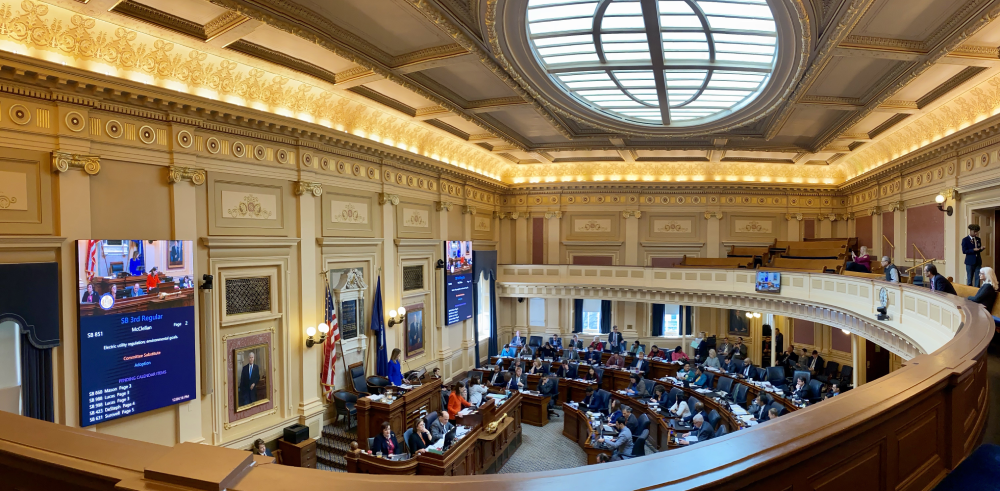Yesterday, Virginia’s General Assembly voted to send a budget bill to the Governor that includes over $200 million for clean water programs over the next two years. While that investment falls short of what the Governor originally proposed, it still sends a strong message that the Commonwealth remains committed to restoring our waterways and meeting our Chesapeake Bay Cleanup commitments by 2025.
All session long, JRA’s advocacy team called on lawmakers to pass legislation that would change the James, and they definitely delivered with much-needed funding and important policies that will help us reach a Grade-A James River for all. Read on for the highlights!
Delivering Clean Water Funding for a Healthy James
Virginia’s Budget for fiscal years 2021 and 2022 includes:
- Over $95,000,000 to help farmers protect their land, their livestock, and their local water quality. Farmland conservation practices are targeted and cost-effective, and they leverage federal and private dollars. This funding also includes annual support for the hard-working staff at our Soil and Water Conservation Districts who provide farmers with technical assistance.
- $50,000,000 for the Stormwater Local Assistance Fund to help cities and towns reduce runoff pollution. Stormwater runoff is the fastest growing source of pollution to the Chesapeake Bay and a major driver of local water quality. Localities across the Commonwealth match these dollars, one for one, to reduce pollution, manage local flooding, and provide other co-benefits for their communities.
- $50,000,000 for wastewater treatment plant upgrades to bring all treatment plants up to the same modern standards. Technology upgrades at sewage treatment plants continue to have a significant impact on the health of our rivers and the Chesapeake Bay. But there is still major room for improvement on the James. Our river receives 76% of the nitrogen pollution released by Virginia’s permitted wastewater facilities. By investing in modern technology for larger treatment plants that can do more, we can meet our local water quality goals and give localities more time to treat tougher sources of pollution, like stormwater.
- $500,000 for Chesapeake Bay environmental education programs, like those that we use to reach the next generation of James Changers. This funding increase will ensure more students receive educational experiences that set the foundation for a lifelong appreciation of our natural resources and teach them how they can help protect their local watershed.
- $20,000,000 for Virginia’s land conservation programs. Parks, farmlands, forests, and other open spaces support local economies and deliver lasting water quality benefits.
Protecting our River through Better Environmental Policy
Lawmakers passed a number of bills that will contribute to a healthier James River. Here are just a few that JRA helped advance:
- A bill that sets a 2035 deadline to fix Richmond’s combined sewer overflows. The City of Richmond has made significant progress in reducing the amount of pollution entering the James River from its combined sewer system, but sewer overflows persist as a serious problem for water quality and a threat to human health after major storms. This bill also encourages the Governor and General Assembly to provide state funding to help Richmond residents cover the cost.
- A bill to make progress on Virginia’s Chesapeake Bay Cleanup Plan and install conservation practices on Virginia farms by 2025. This bill requires certain landowners and farmers within the Chesapeake Bay watershed to install two of the most important practices for meeting our Bay goals and keeping bacteria and other pollution out of our waters: fencing cattle out of streams and using a nutrient management plan when applying fertilizer. But the requirements will not go into effect if we can voluntarily meet our goals by 2025.
- Two bills to keep per- and polyfluoroalkyl substances (PFAS) out of our drinking water. PFAS are man-made chemicals used in items such as shampoo, paint, food packaging, firefighting foam and non-stick pans that persist in the environment and human body, and have been linked to infertility, high cholesterol levels, and increased cancer risks. Together, these bills help the Department of Health set limits on PFAS in our drinking water through science-based recommendations.
- Multiple bills to designate parts of the James River watershed as state scenic rivers. Virginia’s Scenic Rivers Program identifies and protects rivers and streams in the Commonwealth that have outstanding scenic, recreational, historic, and natural characteristics. This year, in recognition of the program’s 50th anniversary, a number of communities in our watershed put forward their local waterway for designation: the Maury River, Gray’s Creek, and 20 miles of the James River from Warren to New Canton.
That’s just the start. This session also delivered wins for environmental justice, sustainable fishery management, more living shorelines, better public notice of spills, climate change mitigation, and flood prevention, just to name a few. We thank all members of Virginia’s General Assembly for making our natural resources a priority this year, and we look forward to the good work that remains ahead to deliver clean water to the Commonwealth.
You can help! Sign up for the latest Action Alerts to help us share solutions with policymakers at key moments. And join our RiverReps, passionate volunteers trained and prepared to speak up on the issues impacting the James River.

